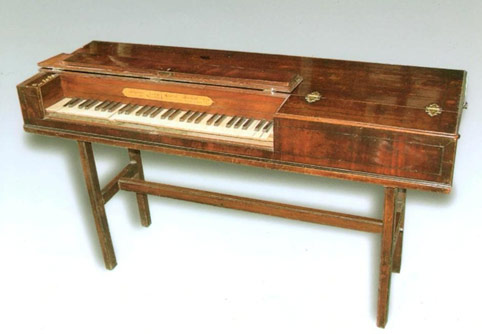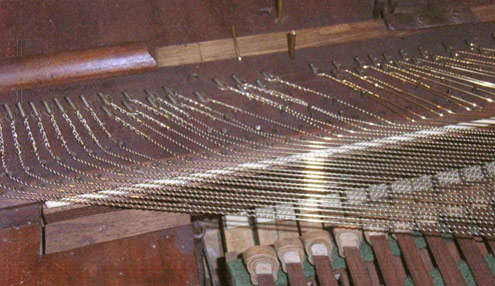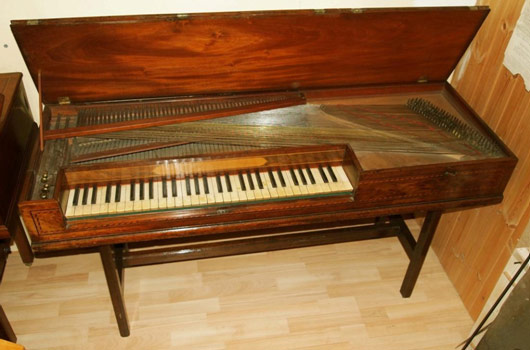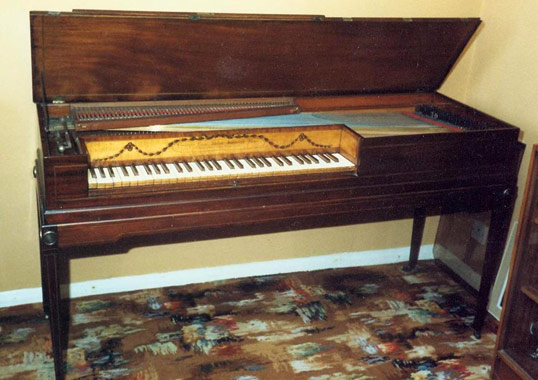This short history fits neatly into just a hundred years. There were pianos before then (in Italy, for example) and the square piano survived longer in mainland Europe and particularly America, but the last Square piano made in England was delivered by Broadwoods in 1866.
In many European countries, the Guild system placed restrictions on the freedom of craftsmen and tradesmen to practice freely: the system maintained standards, it is true, but it did little to encourage, or even allow, enterprise and innovation. However, in mid eighteenth-century London, the grip of the guilds was weakening, and anyone could develop a successful business through his own ability and hard work.
Thus is was that Johannes Zumpe arrived from Saxony in about 1760. Already skilled, he worked for the harpsichord maker Shudi for a while, but soon set up his own workshop in Hanover Square. To all intents and purposes he „invented‟ the square piano as we know it, although it is of course developed from earlier instruments. His genius was perhaps to combine various elements into a small, practical, reliable, and relatively inexpensive instrument. Zumpe‟s first surviving piano is dated 1766, and it seems likely that this was the year in which he introduced the English Square Piano.
These first pianos were barely four feet long, and eighteen inches wide – considerably smaller than even a contemporary spinet.

One important adoption made by Zumpe was his use of covered or overspun strings for the bass notes. By adding weight without reducing flexibility, this technique enabled a relatively short string to give a reasonable sound. It was used for about the lowest eleven notes, and was probably not used in keyboard instruments before then.

Success was rapid, aided in no small part by the encouragement of Johann Christian Bach, the youngest son of the great J. S. Bach. The „London‟ Bach, as he is sometimes called, came to London from Leipzig in 1762, and quickly established his reputation. He became Music Master to Queen Charlotte, and gave what were probably the first public performances on the piano in the late 1760s. Quite soon, Zumpe‟s workshop was unable to meet the demand, and he was soon joined by other makers, working in the same part of London. All of these makers either came from Germany (Pohlman, Ganer) or were apparently of German extraction (Beyer). The earliest piano to have passed through my hands (so far) carries the name “Longman Lukey & Co”, but it was almost certainly made by Frederick Beck (another German immigrant) in about 1772.

This delightful piano is slightly longer than an early Zumpe (at 4‟ 9”) but is still compact, and is identical in almost every detail. There is no pedal: it has three handstops (the brass knobs in the left corner) to control the bass and treble dampers, and a Buff or Harp stop which mutes the tone with a strip of soft leather.
Note that these earliest pianos are always on simple trestle stands.
Moving on about fifteen years, the picture below shows a Ganer piano from about 1787.

This piano sits on the „French‟ stand which was fashionable until about 1806, but is otherwise little changed: it still has the five octave keyboard and handstops, but the dampers are now controlled by just one.
|
